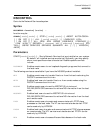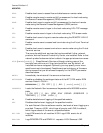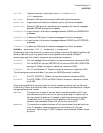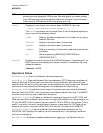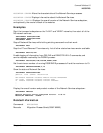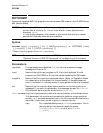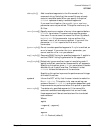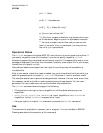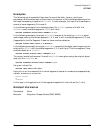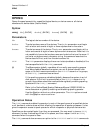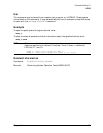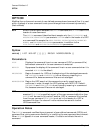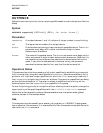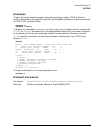
Chapter 5 405
Command Definitions L-O
OCTCOMP
Examples
The following set of examples illustrates the use of the add=, ignore=, and trans=
parameters and the effect each of them has on the content of the translated code output file
with each succeeding invocation of OCTCOMP. In each example, the input file is assumed to
consist of seven segments, 0 through 6.
In the following example, the translated output file, OCTOUT, consists of the SL file
SOURCEIN and translated segments 1, 2, 3, and 4 only.
OCTCOMP SOURCEIN,OCTOUT;INFO="TRANS=1,2,3,4"
In the following example, the output in OCTOUT consists of the existing SOURCEIN object
code image, existing translated segments 1, 2, 3, and 4, with translated segments 0, 5, and
6 appended to the file. Segment 5 does not have overflow detection.
OCTCOMP OCTOUT;INFO="ADD=0,5,6;NOOVF=5"
In the following example, the output in OCTOUT2 consists of the object code image from the
existing file OCTOUT, with translated segments 0, 3, 5, and 6 only. This time segment 5 has
overflow detection in OCTOUT2.
OCTCOMP OCTOUT,OCTOUT2;INFO='IGNORE=1,2,4'
This output would be the same if the call to OCTCOMP were given using the original object
code input file SOURCEIN, as:
OCTCOMP SOURCEIN,OCTOUT2;INFO="IGNORE=1,2,4"
Using an indirect file:
OCTCOMP INSL;INFO="add=^adlist"
Here adlist is an unnumbered file in which segments (names or numbers) are separated by
a blank, a comma, or a new line:
FSSEG1,FSSEG2
12
TIMAGE09
In this case, add is applied to all of the segments specified in the indirect file (^adlist).
Related Information
Commands None
Manuals Migration Process Guide (30367-60003)



